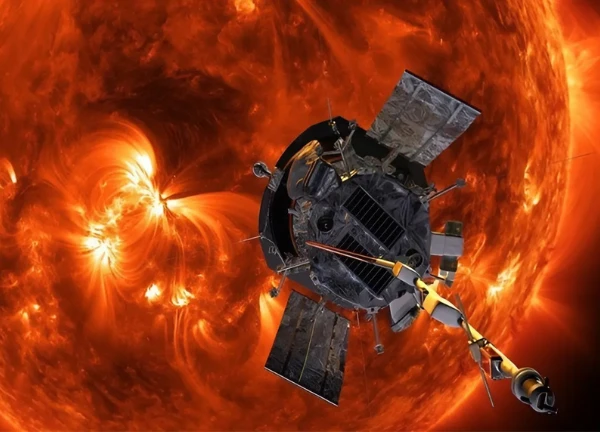Parker probe "touches" the Sun: Breaking records and revealing the mystery of the corona.

2 | 0 Discuss | Share
When it comes to space exploration, we often imagine traveling between planets in the galaxy. But a bold new hypothesis is gaining traction in the scientific community.
When we imagine alien civilizations, it’s easy to imagine that they’d be looking for fast, space-faring means of travel. However, long-lived civilizations may have strong reasons to leave their home planets and star systems. They may want to avoid natural disasters like impending supernovae or potentially damaging space storms. Or they may simply want to go in search of new resources, exploring previously unexplored areas of the universe.
However, interstellar travel is an enormous challenge. Using spacecraft to travel between star systems not only requires extremely advanced technology but also consumes a huge amount of energy. The question is, why move each spacecraft separately when you can carry your entire star system with you? This could help alien civilizations conserve the energy needed to sustain life during long journeys.
Vidal, who has studied theories related to cosmology and extraterrestrial civilizations, suggests that a binary star system could be the ideal platform for a space journey. With two stars orbiting each other, the gravitational force between them could be harnessed to create thrust, allowing the system to move. The entire system would not need to leave its star, but could travel to new regions of space.
To better understand how this works, we need to look at the structure of a binary star system. A binary star system is two stars that orbit each other due to the force of gravity. One of the stars in the binary system may be a neutron star, which is extremely dense and has a strong gravitational pull. This allows it to create a high-energy environment that can power devices that generate thrust.
If alien civilizations could precisely manipulate the gravity and magnetic fields of neutron stars, they could initiate an uneven ejection process. This would create a thrust that would change the orbit of the star system and move the entire system through space. If they could even intelligently change the direction of the ejection, aliens could control the orbit of the neutron star, thereby "steering" the entire star system to unexplored regions of space.
Ideal binary star systems for this kind of migration might consist of a neutron star and a smaller star. The combination of the neutron star's enormous gravitational power and the other star could provide the thrust needed to "steer" the entire star system in a particular direction.
One of the most important elements of Vidal's hypothesis is the existence of extremely fast-moving stellar systems in the galaxy. One of the most prominent examples is the pulsars "Black Widow" PSR J0610-2100 and "Redback" PSR J2043 1711, which are moving so fast that they have attracted the attention of scientists.
PSR J0610-2100, a pulsar in a binary system, is traveling at a speed of up to 1 million km/h, much faster than most other stars in our galaxy. It is a clear example of a binary system capable of extremely strong acceleration, which has led researchers to wonder whether these systems have been influenced by an advanced civilization.
However, there is currently no evidence that these star systems are being influenced by an alien civilization. Some researchers believe that these pulsars may be driven by natural physical forces such as gravitational waves or interactions between stars in binary star systems, but it is still impossible to rule out the possibility that they may be manipulated by some technology.
The idea that alien civilizations could control binary star systems to explore the universe is not an entirely new one. Theories about advanced civilizations capable of building technologies far superior to our own have always fascinated scientists and cosmologists. However, “piloting†an entire binary star system opens up a whole new direction for space travel and exploration.
If this hypothesis is correct, we would be faced with a whole new concept of space travel. This would mean that alien civilizations are not only exploring the galaxy but may have made long-distance journeys across vast regions of space that we have never imagined.
However, until further evidence and research is available, this remains just a hypothesis. Scientists are still searching for signs of advanced civilizations capable of such mysterious space journeys. The question of whether an alien civilization is using a star system to travel through space remains an unanswered mystery.
Meanwhile, discoveries of pulsars and binary star systems continue, and perhaps in the future, we will find important clues to unlocking the secrets of this vast universe. And will aliens—if they exist—actually use star systems to explore space? Only time and science will tell.
Habits that seem right but turn out to be wrong  team youtube09:14:44 14/04/2021There are so many daily habits that you yourself repeat month after month, year after year, you still think it's right to do so because they are so common. However, if you look at the images below, you will be surprised because these actions yourself also accidentally made...
team youtube09:14:44 14/04/2021There are so many daily habits that you yourself repeat month after month, year after year, you still think it's right to do so because they are so common. However, if you look at the images below, you will be surprised because these actions yourself also accidentally made...

2 | 0 Discuss | Share

3 | 0 Discuss | Share

3 | 0 Discuss | Share

5 | 0 Discuss | Share

3 | 0 Discuss | Share

4 | 0 Discuss | Share

3 | 0 Discuss | Share

2 | 0 Discuss | Share

3 | 0 Discuss | Share

1 | 0 Discuss | Share

2 | 1 Discuss | Share

3 | 0 Discuss | Share










3 | 0 Discuss | Report